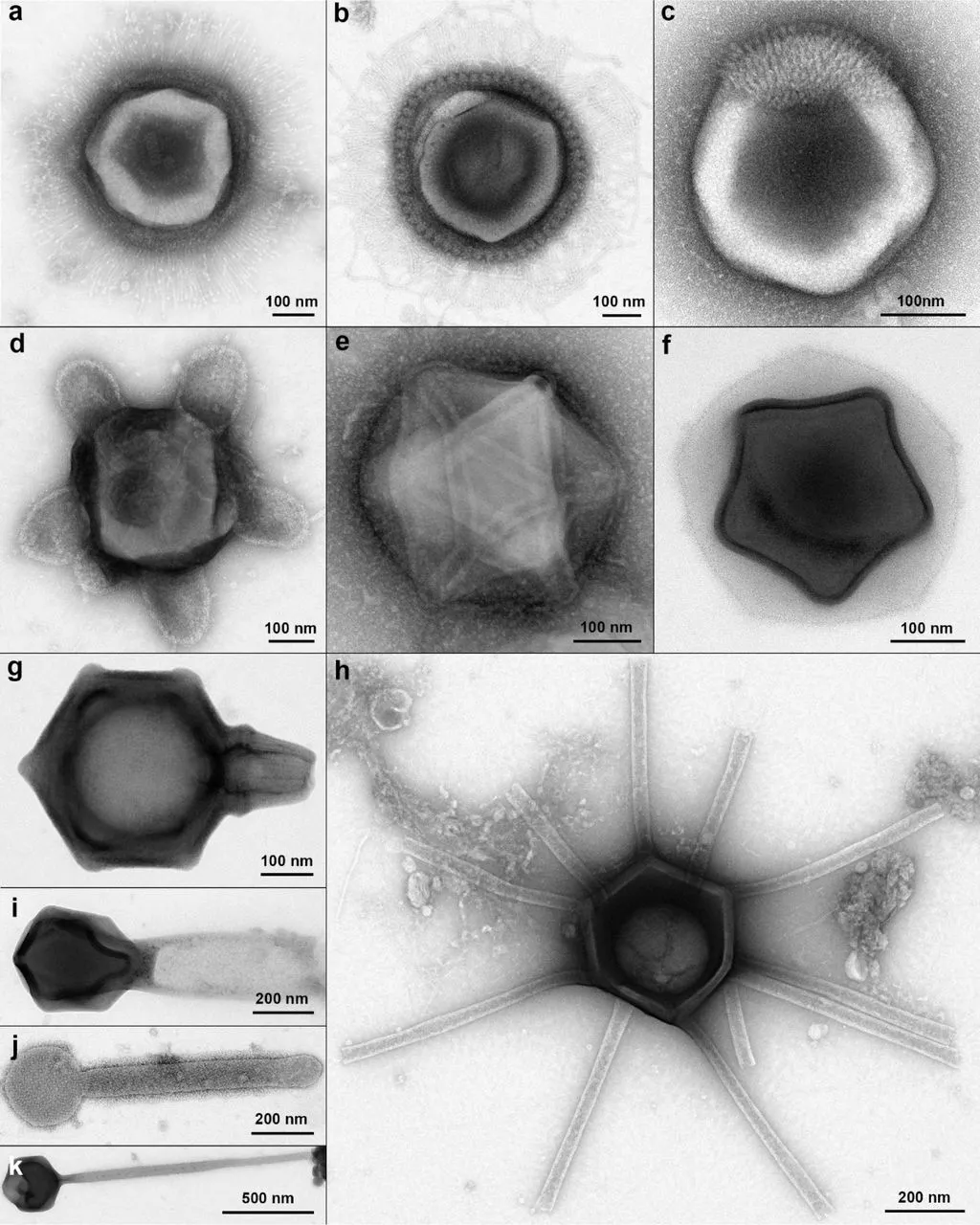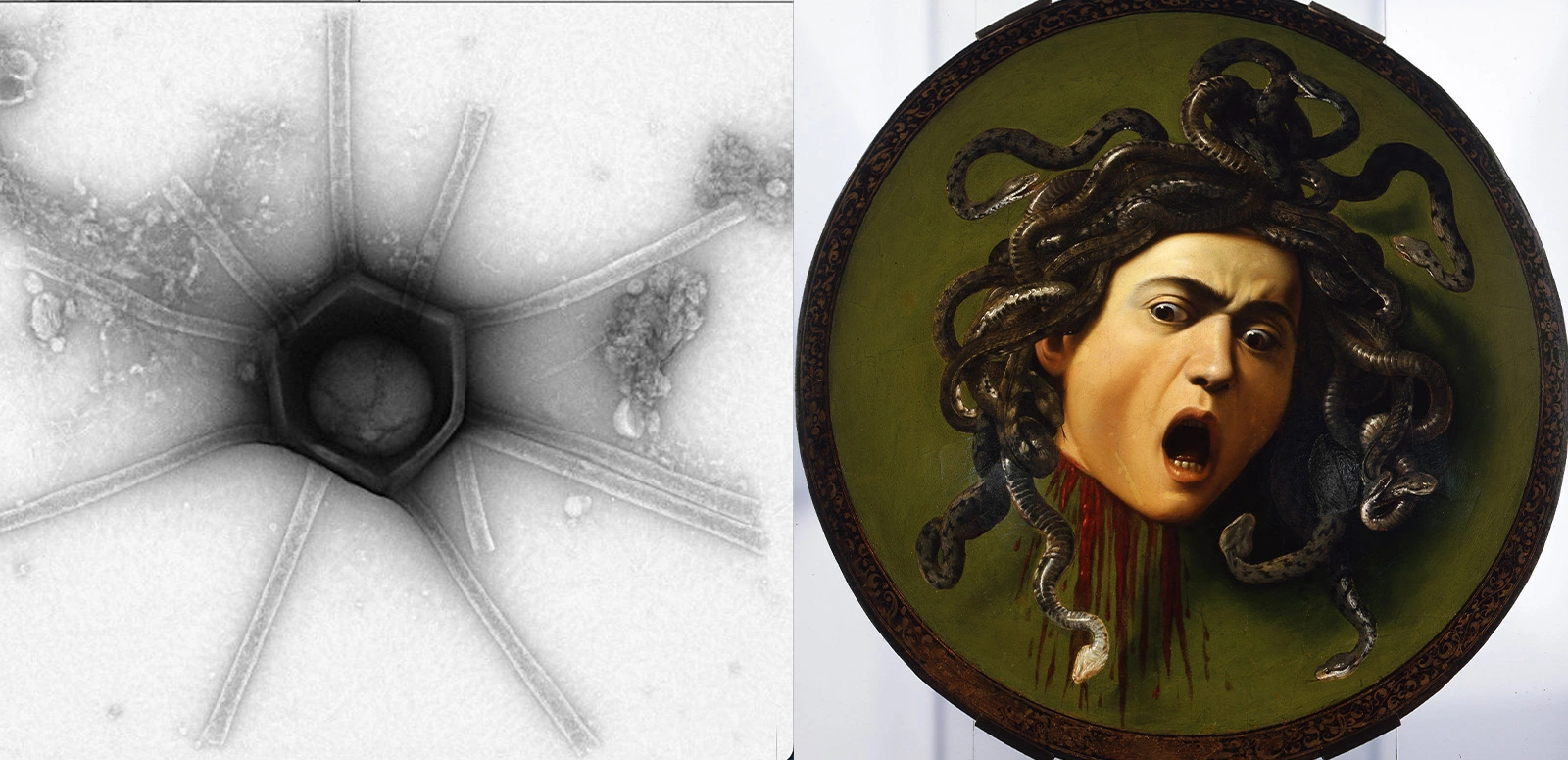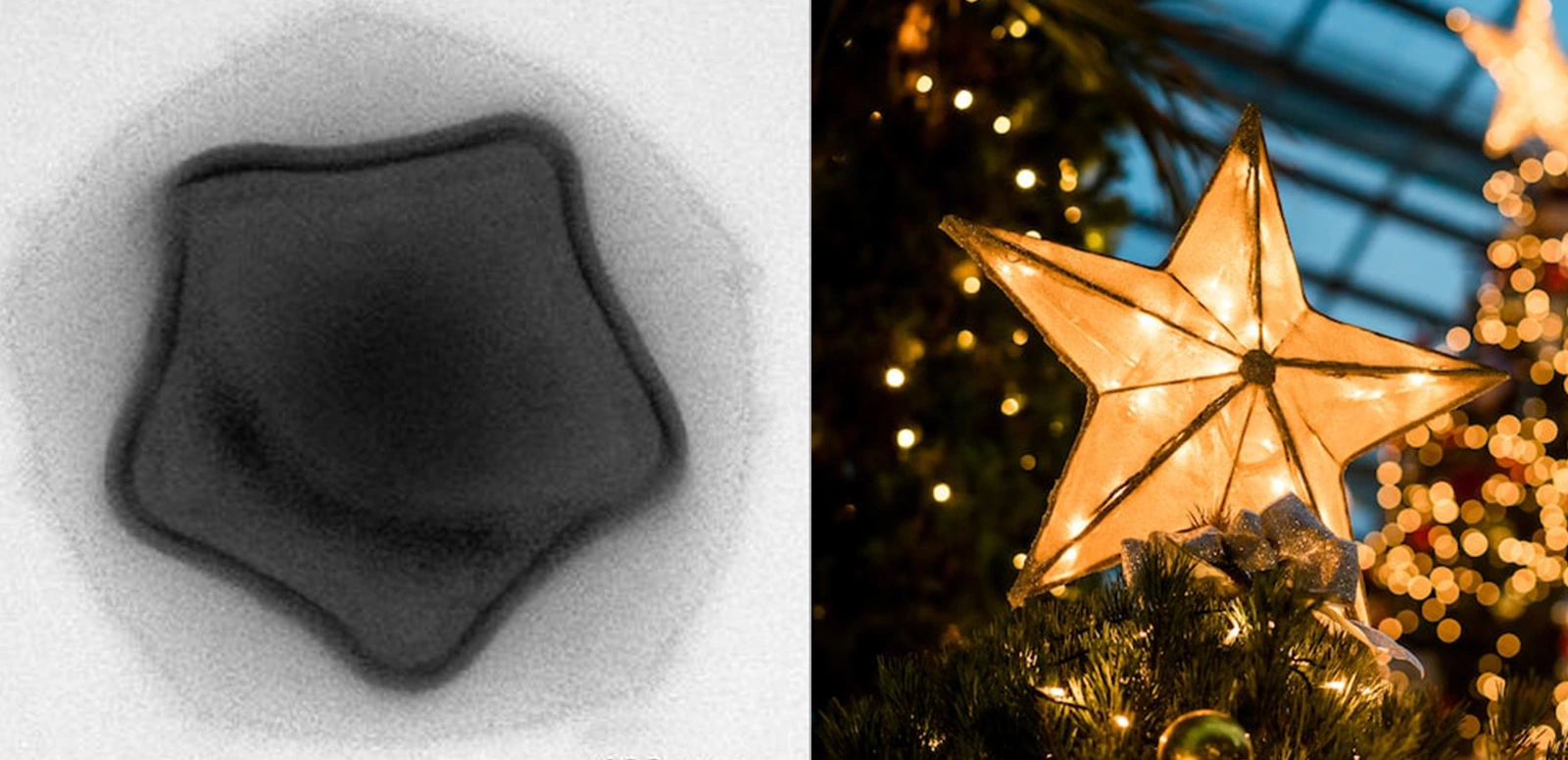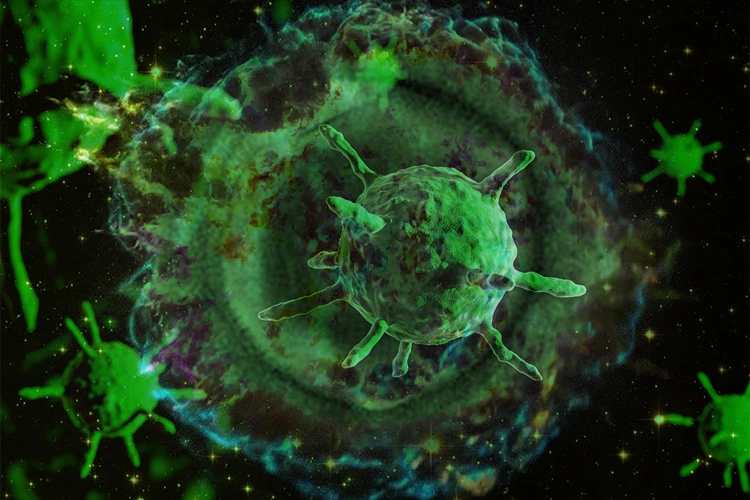A team of researchers exploring soil samples from Harvard Forest in Petersham, Massachusetts, have uncovered an astonishing range of bizarre, alien-looking giant viruses.
The viruses present previously unseen traits such as star-like outer shells and peculiar tubular extensions, suggesting that our understanding of the viral realm may need significant revision.
Study findings, which currently remain in preprint status on bioRxiv, reveal a bewildering diversity of virus-like particles (VLPs), which researchers believe far exceeds the diversity seen in all previously identified giant viruses.
“Amazingly, we found that a few hundred grams of forest soil contained a greater diversity of capsid morphotypes than that of all hitherto isolated giant viruses combined,” researchers wrote. “This observation is even more astounding when considering that we imaged only an infinitesimally small fraction of the viral diversity present in these soil samples.”
Study co-author and virologist at Max Planck Institute for Medical Research, Dr. Matthias Fischer, exclaimed at the surprising abundance of viral diversity in the soil sample. “We’ve discovered an entirely new range of shapes that we have never seen before,” Dr. Fischer told Live Science, “I would bet that many of those, if not the majority, are completely new and first sightings of viruses that we have never seen before.”


a) “Mimi-like” morphotype. b) “Supernova” morphotype. c) “Haircut” morphotype. d) “Turtle” morphotype. e) “Plumber” morphotype. f) “Christmas star” morphotype. g) “Flacon” morphotype. h) “Gorgon” morphotype. i)-k) Large VLPs with tail structures. (Image Source: Matthias G. Fischer, Ulrike Mersdorf, Jeffrey L. Blanchard/bioRxiv)
For most, the word “virus” invokes thoughts of illnesses like influenza or COVID-19. More broadly, viruses are microscopic entities, typically much smaller than bacteria, that exist on the boundary between living and nonliving organisms. They consist of genetic material, either DNA or RNA, enclosed in a protein coat known as a capsid, with some also having an outer envelope made from the host cell’s membrane.
Intriguingly, viruses cannot reproduce on their own and instead invade the cells of a host organism, hijacking its cellular machinery to replicate. These replicas then leave the host cell, often destroying it in the process, and go on to infect other cells. Viruses can infect virtually every organism, from humans and animals to plants and even bacteria.
Viruses’ notorious reputation stems from being responsible for many human diseases, including the common cold, chickenpox, Ebola, AIDS (HIV), and SARS. Despite this infamous notoriety, viruses also play an essential role in evolution by transferring genes between different species, thus increasing genetic diversity.
Giant viruses, which dwarf their more common counterparts, such as the influenza virus, typically range from 0.2 to 1.5 micrometers in size and carry complex genomes with up to 2.5 million DNA base pairs. Their primary hosts generally are single-cell organisms like amoebas, and their habitats are globally widespread, from Arctic lakes to the oceans and melting permafrost.
In a 2018 study, scientists found giant viruses in the Harvard Forest soil using metagenomic analysis. In contrast, the Max Planck Institute team employed a transmission electron microscope to analyze soil samples, enabling them to visualize the viruses in intricate detail.
Upon analysis, researchers discovered a multitude of bizarre virus-like particles, including one sporting a unique star-shaped double-layered shell, affectionately nicknamed the “Christmas star.” Other morphotypes, labeled by researchers based on their appearance, included the “Plumber,” “Supernova,” the “Haircut,” “Turtle,” “Flacon,” and “Gorgon.”


Matthias G. Fischer, Ulrike Mersdorf, Jeffrey L. Blanchard/bioRxiv
Researchers refrained from calling the newfound particles “giant viruses” due to their lack of genomic analysis. Instead, they tentatively labeled the curious structures “virus-like.” However, researchers note that, in all likelihood, these are indeed giant viruses.
“Although electron microscopy alone is not sufficient to unambiguously establish the nature of an observed nanoparticle, we argue that large icosahedral VLPs [virus-like particles] with modified capsids can be called ‘virus particles’ with even higher confidence than some of the most iconic virus morphotypes,” researchers wrote. “This is because gene transfer agents may be visually mistaken for tailed bacteriophages, whereas we are not aware of any non-viral particles that would resemble large, appendage-bearing capsids with icosahedral-based symmetry.”


The functions of these unusual giant viruses remain elusive. However, researchers theorize that they may aid in the viruses’ adhesion to their host cells. They also suggest that similar giant viruses could exist in the soils of other hardwood forests across the globe.
The most pressing question on people’s minds is whether these freshly discovered alien-looking viruses are a harbinger of a new global health crisis. Especially since the world is just now beginning to recover from the Covid-19 pandemic.
Fortunately, Dr. Fischer and his colleagues say that these types of giant viruses discovered in the ecological research area owned and managed by Harvard University are unlikely to pose a threat to humans.


Instead, researchers believe the giant viruses play a crucial role in the ecosystem, particularly in carbon cycling, controlling the abundance of microbes that affect carbon flow in the ground.


Dr. Fischer emphasized the significance of their recent study, hoping that it inspires others to appreciate the diversity of these microscopic entities and encourages further research into the intriguing and often elusive nature of the viral universe.
“The cornucopia of viral morphotypes found in Harvard Forest alone questions our current understanding of the virosphere and its structural heterogeneity,” researchers wrote.
“This fascinating window into the complex world of soil viruses leaves little doubt that the high genetic diversity of giant viruses is matched by diverse and previously unimaginable particle structures, whose origins and functions remain to be studied.”
Tim McMillan is a retired law enforcement executive, investigative reporter and co-founder of The Debrief. His writing typically focuses on defense, national security, the Intelligence Community and topics related to psychology. You can follow Tim on Twitter: @LtTimMcMillan. Tim can be reached by email: tim@thedebrief.org or through encrypted email: LtTimMcMillan@protonmail.com

